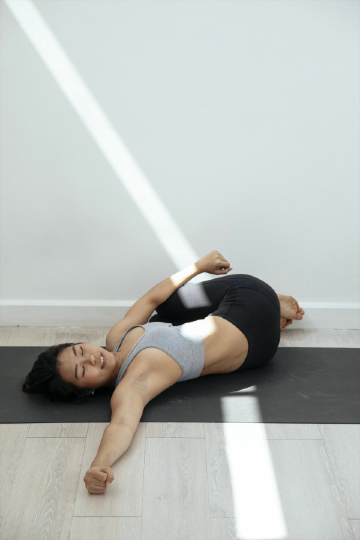Yoga & Your Hormones
It’s common knowledge now that a regular yoga practice can help calm your mind, and of course enhance your flexibility. But, have you considered what yoga can do for your hormonal imbalance?
If you’re unsure if your hormones are balanced or not, take a moment to think about any symptoms you feel daily. Are your cycles irregular? Do you find yourself fatigued almost daily? Have mood swings, weight gain, acne along your chin? If you said yes to a few, or all, of the above, you may have some things out of whack! Not to worry, we’re here to help you on your journey!
How can yoga help?
Stress Reduction: One of the primary ways yoga benefits hormone balance is through stress reduction. Chronic stress can disrupt the endocrine system, leading to hormonal imbalances. Yoga's emphasis on deep breathing and mindfulness helps reduce stress by activating the parasympathetic nervous system, which counteracts the "fight or flight" response triggered by stress. Cortisol is our body’s stress hormone, and is the foundation that each of our other hormones work off of. If Cortisol is messed up, it’s likely everything else is too.
Balasana (Child's Pose)
How To: Knees mats-width distance, toes to touch, stretch your hands down your mat and sit your weight back onto your heels. Hold for a few breaths.
Balancing the Endocrine System: Yoga poses and practices that involve gentle inversions, backbends, and twists stimulate the endocrine system as well as your gut, which is essential to hormonal production. This stimulation can enhance the function of the pituitary, pineal, and adrenal glands too, which play pivotal roles in hormone regulation. If your gut is happy, your hormones are bound to be happier as well!
Supta Matsyendrasana (Reclining Spinal Twist)
How To: Lay on your back, twist your knees to the left side with them touching the floor, reach your right hand out to the right side turning your head to face your fingers. Hold for a few breaths, and switch sides.
Blood Flow and Circulation: Yoga encourages better circulation and blood flow, which can aid in the transportation of hormones throughout the body. Poses like Downward Dog and Forward Fold promote blood flow to the pelvic region, supporting reproductive health. Enhanced circulation is also important for your metabolism, which we need to metabolize our hormones. If we aren’t metabolizing our hormones properly, we run into issues such as increased estrogen or testosterone, which can lead to issues such as endometriosis or PCOS respectively. Both of these chronic conditions are known to be associated with fertility issues, so of course we want to do everything we can to manage these types of conditions.
Viparita Karani (Legs-Up-the-Wall Pose)
How To: Lie on your back with your sit bones as close to the base of the wall as possible. Extend your legs up the wall and relax.
Mind-Body Connection: Yoga fosters a strong connection between the mind and body. This awareness can help individuals better understand their bodies and recognize early signs of hormonal imbalance, leading to proactive self-care. I’m a big advocate for listening to our bodies. Once you’re truly in tune, you can really tell what moves your body needs, or what foods you should focus on. Yoga connects you to your body’s rhythm and needs unlike any other exercise regime I’ve tried!
Adho Mukha Svansana (Downward Facing Dog)
How To: Start in a table top position with your hands directly underneath your shoulders and your knees directly underneath your hips. Push your hips up and back working to inch your heels closer to the mat. Keep your feet at hips-width distance, your core engaged, and your head and neck relaxed. Hold for a few breaths.
Yoga is more than just a physical exercise; it's a holistic approach to well-being that encompasses the mind, body, and spirit. Its ability to reduce stress, improve sleep, stimulate glands, and enhance overall health makes it an effective tool for balancing hormones naturally. Always remember when practicing yoga not to push your body beyond its limits. It’s okay if you can’t get all the way into a pose on your first try; yoga is about building upon your practice over time.
Incorporating yoga into your daily routine can be a transformative step towards achieving hormonal balance, leading to improved overall health and well-being. So, roll out your yoga mat, take a deep breath, and embark on your journey to hormonal harmony through the practice of yoga. Your body and mind will thank you for it.
Namaste.
It's essential to remember that yoga should be viewed as a complementary practice rather than a sole treatment for hormonal imbalances. If you suspect you have a hormonal issue, consult with a healthcare professional before adding any supplements or new exercises to your regiment.




